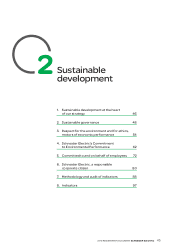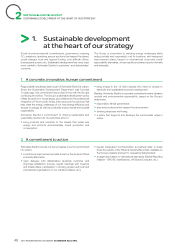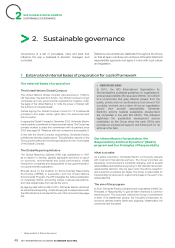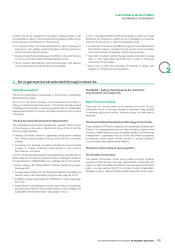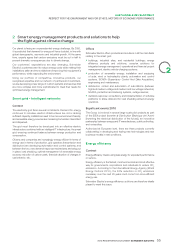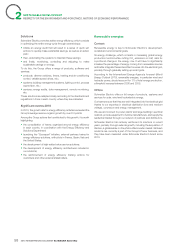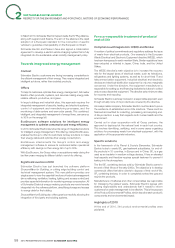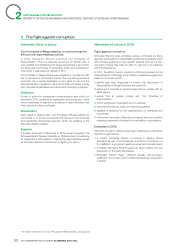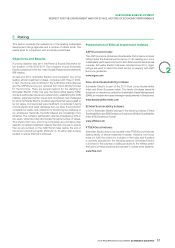APC 2010 Annual Report Download - page 57
Download and view the complete annual report
Please find page 57 of the 2010 APC annual report below. You can navigate through the pages in the report by either clicking on the pages listed below, or by using the keyword search tool below to find specific information within the annual report.
SUSTAINABLE DEVELOPMENT
RESPECT FOR THE ENVIRONMENT ANDFOR ETHICS, MOTORS OF ECONOMIC PERFORMANCE
2 Smart energy management products and solutions to help
thefightagainstclimate change
Our planet is facing an unprecedented energy challenge. By 2050,
it is predicted that demand for energy will have doubled, in line with
global demographic, economic and industrial growth. At the same
time, experts agree that carbon emissions must be cut in half to
prevent dramatic consequences due to climate change.
Our customers’ expectations are also changing. Schneider
Electric’s customers want to reduce energy costs while making their
installations safer and more reliable and improving their equipment’s
performance, while respecting the environment.
Using our portfolio of competitive, innovative products, our
recognised expertise and our network of partners and customers,
we are developing a new range of custom systems and services that
are more complex and more sophisticated to meet their needs for
optimised energy management.
Smart grid – Intelligent networks
Context
The electricity grid faces several constraints. Demand for energy
continues to increase, electric infrastructures are old or lacking
suffi cient capacity, installations need to be more environment-friendly,
and renewable energy sources are increasing but remain intermittent
and dispersed.
The grid must therefore be developed into an effective electric
infrastructure combined with an intelligent IT infrastructure: the smart
grid, ensuring continued balance between energy production and
consumption.
Citizens and companies are increasingly energy effi cient in terms of
energy use; in terms of production, grid operators (transmission and
distribution) are developing automation and control systems; and
between the two, new demand-response mechanisms are being put
in place: load shedding, optimal management of renewable energy
sources, reduction of carbon peak, fi nancial valuation of changes in
use behavior, etc.
Offers
Schneider Electric offers products and solutions in all the main fi elds
relating to the smart grid:
•buildings, industrial sites, and residential buildings: energy
effi ciency products and solutions, complex solutions for
integrated energy management, operational and fi nancial project
management, electric vehicle charging systems;
•production of renewable energy: installation and equipping
of solar, wind or hydroelectric plants, automation and control
systems, SCADA (Supervisory Control And Data Acquisition),
engineering and maintenance;
•distribution: control and automation of sub-stations (between
high and medium voltage and medium and low voltage networks),
SCADA, protection and metering systems, outage devices;
•demand-response: consultancy and implementation of software
platforms to share data and for load shedding aimed at energy
operators.
Significant events 2010
The Group is involved in several large-scale pilot projects as part
of the IDEA project (Inventer la Distribution Électrique de l’Avenir
[Inventing the electrical distribution of the future]), an innovative
partnership between energy and IT manufacturers, public authorities,
and universities.
Authorised at European level, there are three projects currently
collaborating in developing and testing new technologies and new
business models in real conditions.
Energy efficiency
Context
Energy effi ciency means using less energy for equivalent performance
or service.
Energy effi ciency is the fastest, most economical and most effective
way for governments, corporations and individuals to reduce CO2
emissions. According to the International Energy Agency (World
Energy Outlook 2010), the 53% reduction in CO2 emissions
necessary over the next 20years must come from more effi cient
energy use.
Schneider Electric’s energy effi ciency solutions are therefore ideally
placed to meet this issue.
2010 REGISTRATION DOCUMENT SCHNEIDER ELECTRIC 55
2


